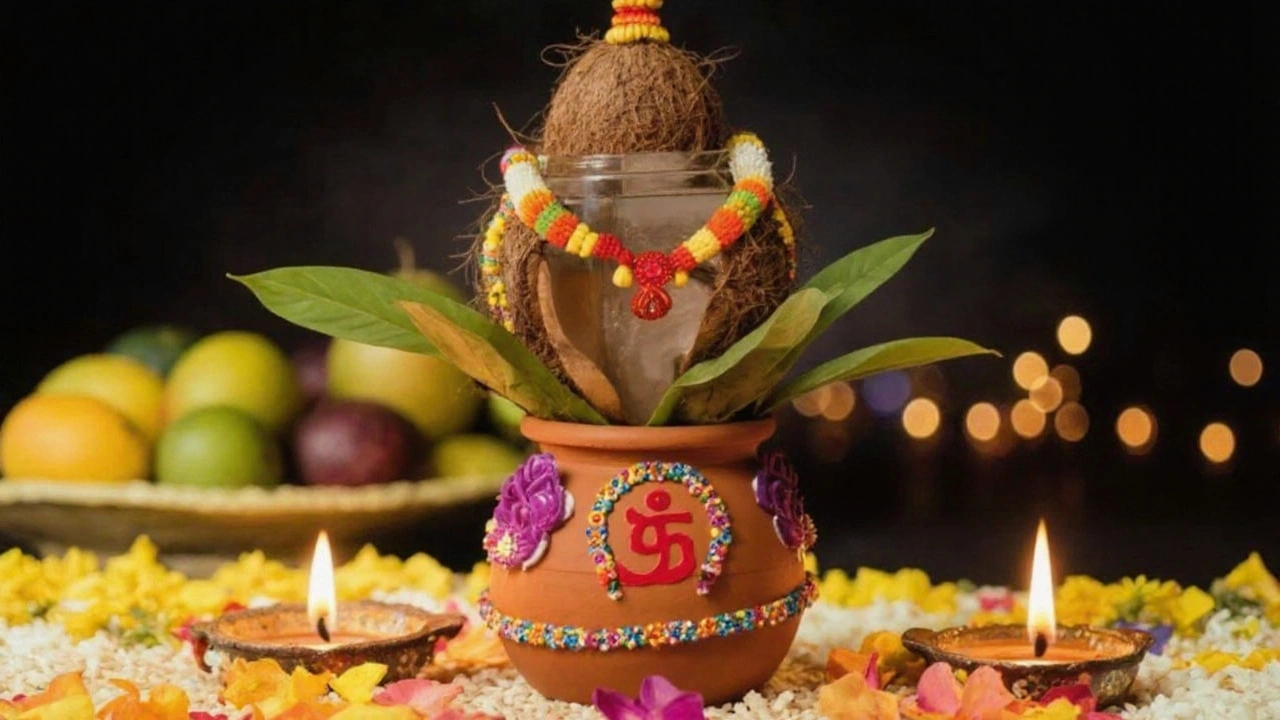Chaitra Navratri 2025 – Dates, Rituals and Celebration Guide
When you hear Chaitra Navratri 2025, the nine‑night spring festival that marks the start of the Hindu lunar month Chaitra. Also known as Spring Navratri, it blends devotion, dance, and community gatherings across many Indian states. This edition lands in March‑April 2025, aligning with the waxing moon and the arrival of warmer weather, so families plan special puja schedules, decorate homes with rangoli, and set up temporary altars for the goddess. Below you’ll find a snapshot of what makes this Navratri distinct and why it matters for anyone interested in Indian cultural rhythms.
How Chaitra Navratri Connects with the Wider Navratri Cycle
The term Navratri, refers to a series of three seasonal nine‑night festivals honoring the divine feminine that recur each year. While Sharad Navratri in autumn enjoys the biggest media coverage, Chaitra Navratri offers a quieter, agrarian‑focused vibe. It’s the first of the tri‑annual Navratri celebrations, setting the tone for the later festivals. In 2025, many temples will host early morning *mahalaxmi* aarti, and local cultural groups will perform *garba* and *dandiya* dances that differ slightly from the evening styles seen in October. Understanding this link helps you see how ritual timing, community participation, and regional customs intertwine across the year.
The timing of Chaitra Navratri is dictated by the Chaitra month, the first month of the Hindu lunar calendar that usually falls in March‑April of the Gregorian year. Because the Hindu calendar is lunisolar, the exact start date shifts each year, making the 2025 schedule unique. Farmers often sync the festival with sowing cycles, believing the goddess’s blessings aid crop growth. This connection to agriculture brings a flavor of gratitude and hope that you won’t find in the more urban‑centric Sharad Navratri. Expect special *prasad* offerings made from fresh produce, and community feasts that highlight seasonal vegetables and sweets.
At the heart of every Navratri lies the worship of Goddess Durga, the fierce protector who embodies strength, compassion and the triumph of good over evil. During Chaitra Navratri 2025, devotees focus on her first three forms—*Kalaratri*, *Kamakshi*, and *Brahmacharini*—each representing a stage of spiritual awakening. Temples will display distinct *kumkum* and orange motifs, while home altars feature fresh *marigold* garlands. Many participants observe fasts that exclude grains but allow fruits and dairy, seeing the practice as a way to cleanse both body and mind. The evenings culminate in *Dandiya* sticks clacking, children chanting *Garba* verses, and the final *Vijay Dashmi* celebration where the victory of Goddess over the demon Mahishasura is reenacted with fireworks.
All these elements—calendar nuances, agricultural ties, devotional practices, and artistic expressions—create a rich tapestry that defines Chaitra Navratri 2025. Below, you’ll find a curated list of articles that dive deeper into each aspect, from exam admit cards scheduled during the same period to cultural spotlights on regional festivals. Whether you’re planning to attend a local *Garba*, looking for fasting tips, or simply curious about how this spring Navratri fits into the broader Hindu festival landscape, the collection ahead has you covered. Stay tuned for practical insights, event calendars, and stories that bring the spirit of Chaitra Navratri to life.

Chaitra Navratri 2025 Begins March 30 with Ghatasthapana Ritual
The nine‑day Chaitra Navratri 2025 kicks off on March 30 with the sacred Ghatasthapana ceremony. Each day honors a distinct form of Goddess Durga, culminating in Ram Navami on April 7. The festival marks the Hindu New Year in North India and retells the epic battle against demon Mahishasura. Traditional fasts, prayers, and Kanya Pujan bring communities together across the country.